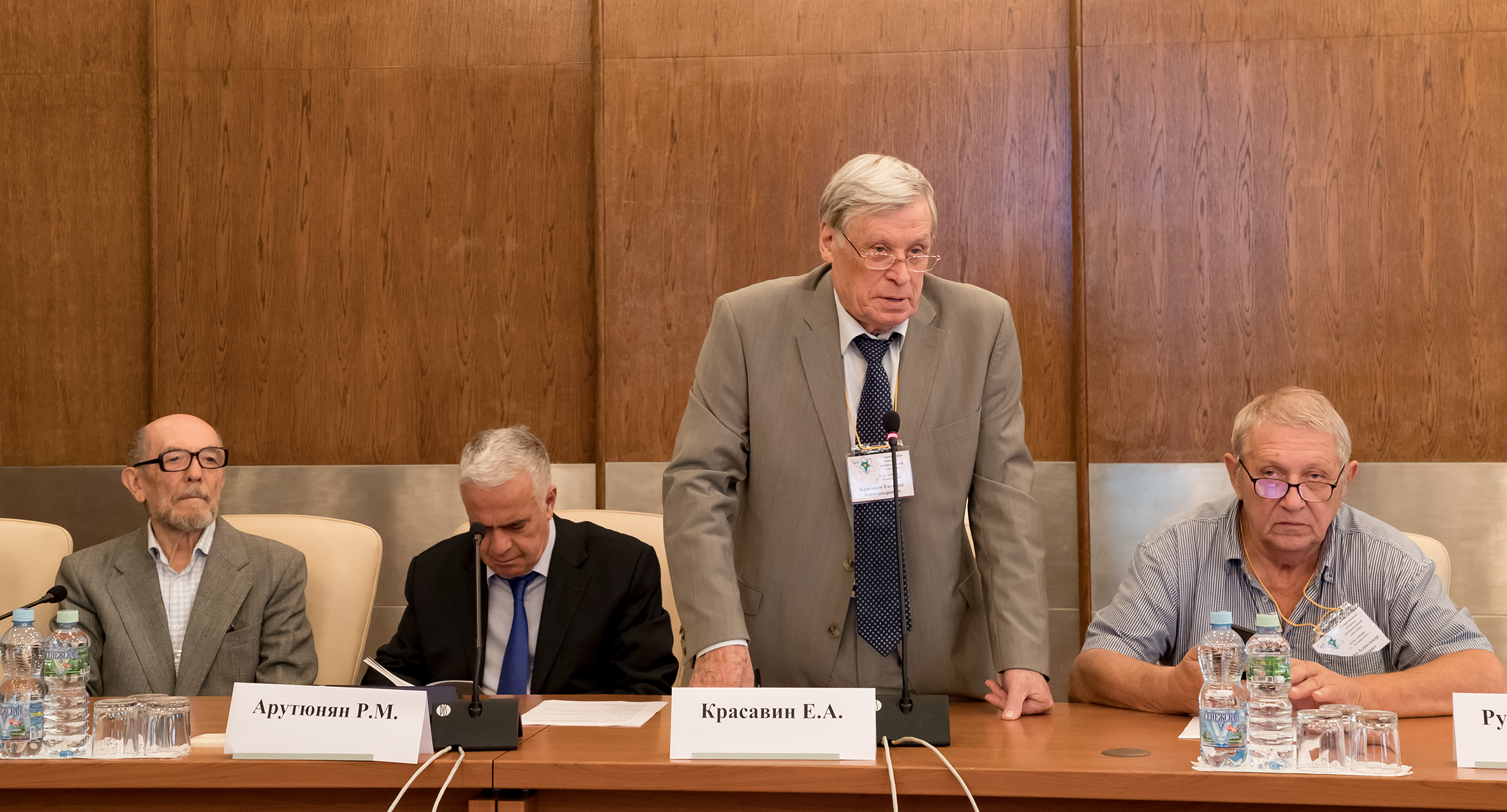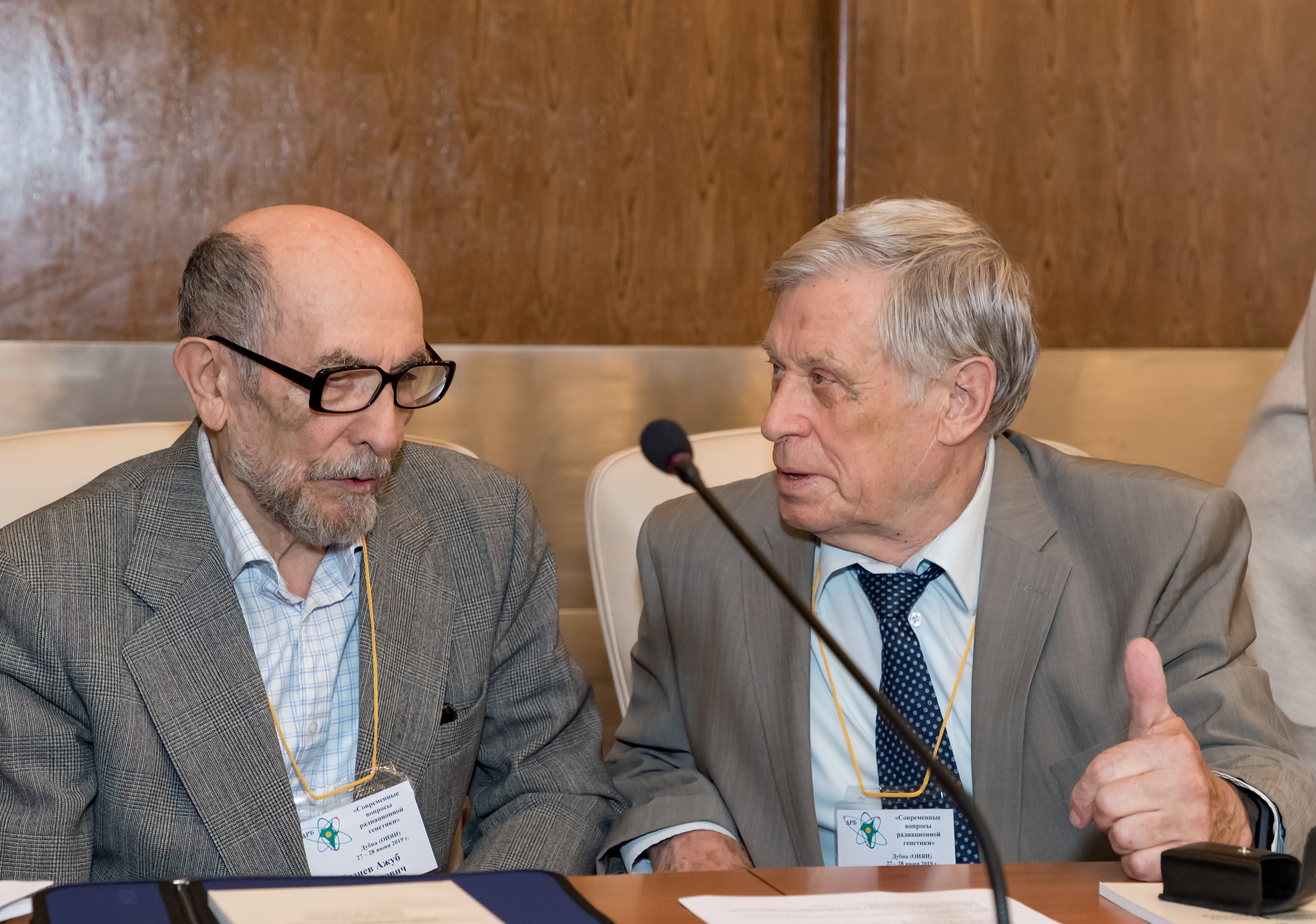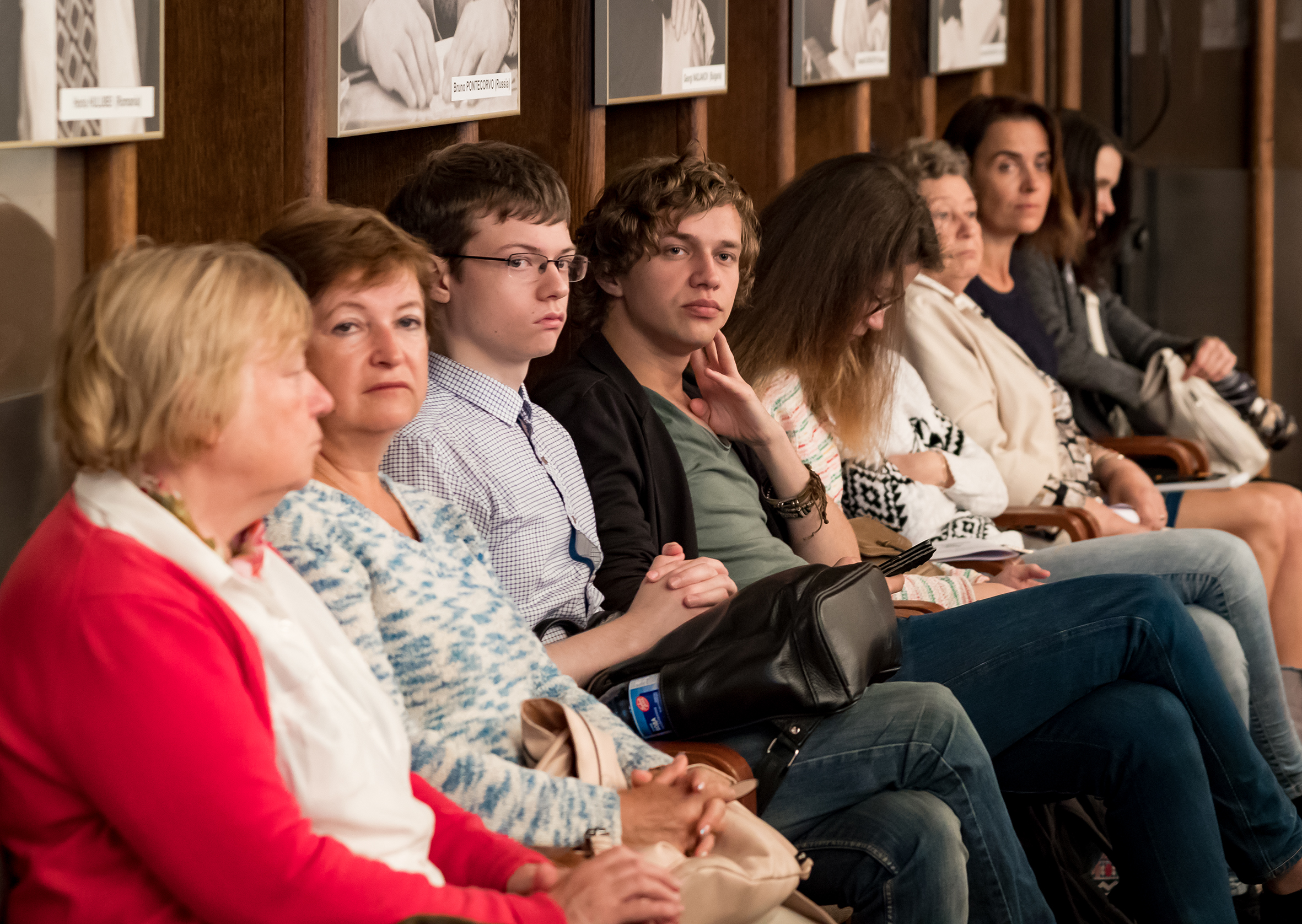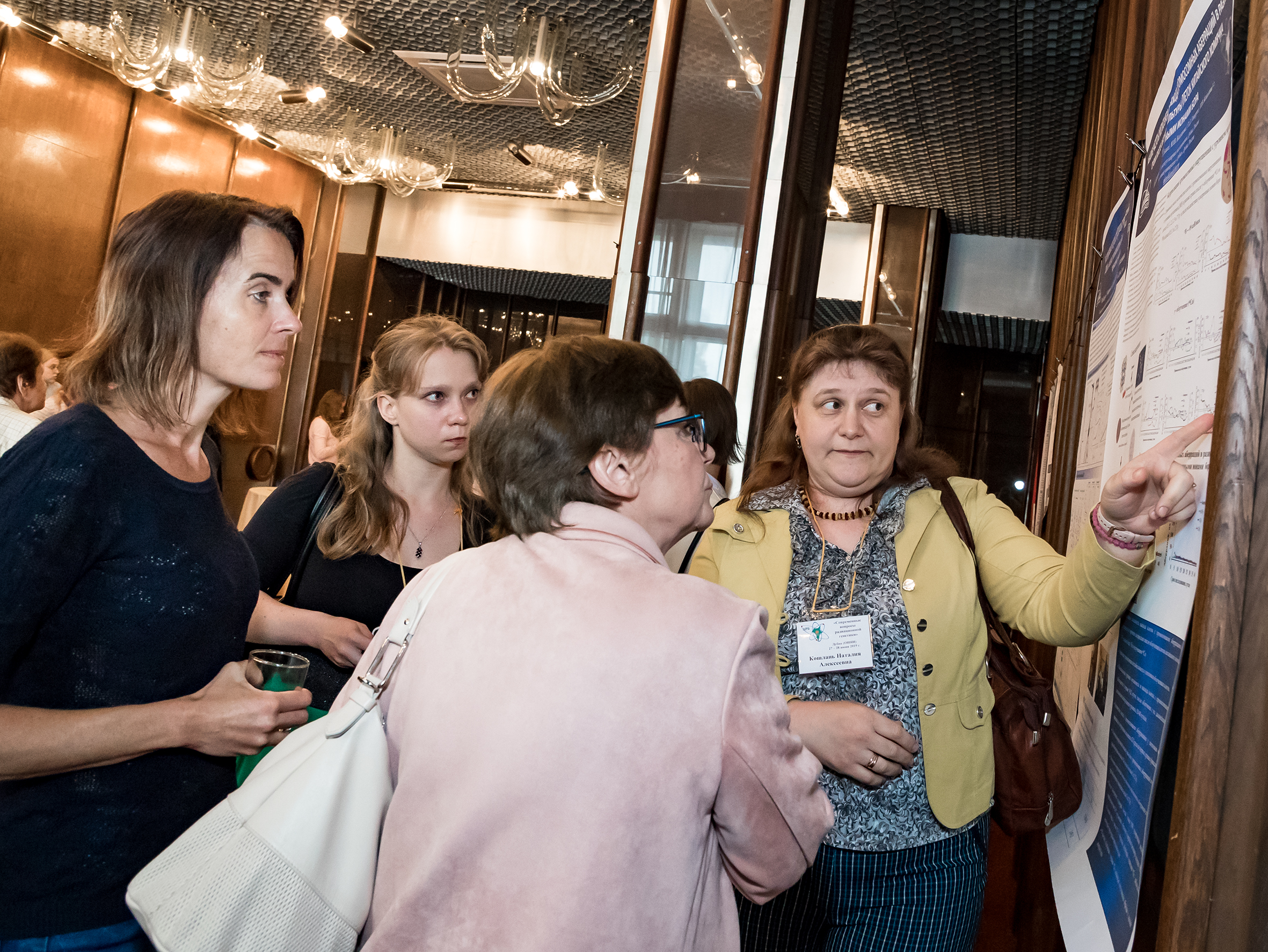Radiation Genetics: results and plans
News, 12 July 2019
On 27 – 28 June 2019, the Russian conference with international participation “Modern issues of radiation genetics” was held in Dubna. It was organized by the Laboratory of Radiation Biology JINR, the RAS Scientific Council for Radiobiology, the RAS Radiobiological Society, and the State University “Dubna”. Participants of the Conference presented the results of research on mechanisms of the induction of genetic and epigenetic changes in objects with different genetic makeup exposed to various doses of ionizing radiation, discussed the issues of modification of genetic defects under radiation, and others.
Photo- and video report on the Conference
The Conference gathered staff members from the Yerevan State University (Armenia), Moscow NRC “Kurchatov Institute”, the Institute of Biochemical Physics of RAS, the Institute of General Genetics of RAS, the RAS Institute of Chemical Physics, the Federal Medical Biophysical Centre, the Institute of Theoretical and Experimental Biophysics of RAS (Pushchino), the Institute of Radiology and Agroecology (Obninsk), the Institute of Biology of Komi of the scientific centre of the RAS Ural branch, the Ural Scientific and Practical Centre of Radiation Medicine of the FMBA (Chelyabinsk), the Institute of Experimental Physics (Sarov), the Scientific and Research Institute of Medical Genetics of the Tomsk National Medical Research Centre, and many other Russian centres. Staff members of LRB and DLNP JINR, students and postgraduates of the Dubna University took part in the event.
Welcoming participants of the Conference, LRB Director RAS Corresponding Member E. A. Krasavin noted that as far as leading specialists in the fields of radiation genetics gathered in Dubna there was an excellent opportunity to discuss recent results in the field acquired in leading research centres of Russia and in JINR. He said to JINR mass media:
“The point is that radiation genetics is a branch of radiation biology, but it is its special branch with the longest history as far as ionizing radiation is, one the one hand, an instrument to solve numerous fundamental questions of modern biology and, on the other hand, there is a colossal practical benefit for all the humanity in this field. As for fundamental aspects, the theory of DNA repair emerged from this branch of biology. It is a super-fundamental field studying the mechanisms of curing living cells of damages caused by various external agents, not only ionizing and ultraviolet radiation but various chemical agents as well. Finally, the Nobel Prize in this field was awarded. Prof. A. I. Gaziev (left person in the photo) takes part in the Conference. He has cooperated with Prof. Thomas Lindahl for many years who won this prize in 2015. It is a basic field for our science.
We invited for participation specialists from different organizations of our country; geography is large – from Eastern regions to Western ones. A representative of Armenia, Academician R. M. Aroutiounian, a leader in the field in his country, takes part in the Conference; we have been long cooperating with him. Even the first reports made at the Conference are interesting and can be applied to various spheres of human activities: from ecology to space. We will exchange modern developments in the field and outline particular steps to solve the tasks of the genetic impact of not only ionizing radiation but various DNA-tropic agents as well.”
“A link between physics, biology and medicine can be seen…”
“The point is that all outstanding theoretical physicists touched upon this problem to a certain extent. We can just recall Erwin Schrödinger who wrote a fascinating book “What is life? The physical aspect of a living cell” in which he considered the mutation process. However, there were some simplified views on the mechanism of mutagenesis, so-called classical views. Now we understand how complicated and multi-staged process of mutagenesis is under the exposure of ionizing radiation. It impacts the whole complex hierarchy of makeup of living cells.”
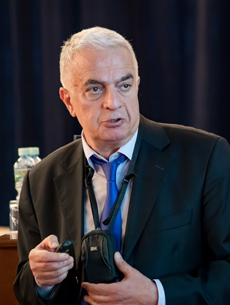 Academician of Armenian NAS R. M. Aroutiounian in his report at the opening ceremony of the Conference highlighted that the RAS Scientific Council for Radiobiology and LRB JINR implement a coherent policy in the fields of radiobiology in the country. He reminded that radiobiology in Armenia is closely linked to the name of N. V. Timofeev-Ressovsky who visited the Republic in 1963-1964. The Laboratory of Radiation Biology was established in the Physical Institute on his insistence. “We are united by decades of close friendship with LRB that implements a comprehensive interesting scientific policy, and it is seen thanks to the interesting programme of the Conference.” Rouben Mikhailovich opened the scientific programme of the Conference with the report “Kinetics of the DNA-repair and epigenetic changes after radiation by ultrashort pulses of accelerated neutrons” and gave an interview to the Institute’s mass media.
Academician of Armenian NAS R. M. Aroutiounian in his report at the opening ceremony of the Conference highlighted that the RAS Scientific Council for Radiobiology and LRB JINR implement a coherent policy in the fields of radiobiology in the country. He reminded that radiobiology in Armenia is closely linked to the name of N. V. Timofeev-Ressovsky who visited the Republic in 1963-1964. The Laboratory of Radiation Biology was established in the Physical Institute on his insistence. “We are united by decades of close friendship with LRB that implements a comprehensive interesting scientific policy, and it is seen thanks to the interesting programme of the Conference.” Rouben Mikhailovich opened the scientific programme of the Conference with the report “Kinetics of the DNA-repair and epigenetic changes after radiation by ultrashort pulses of accelerated neutrons” and gave an interview to the Institute’s mass media.
“I represent the National Academy of Sciences of Armenia, I am Academician-Secretary of the Department of Natural Sciences. I also represent the Yerevan State University that in May 2019 celebrated its 100th anniversary. We have been engaged in the fields of radiation genetics for decades cooperating with Russian and Western colleagues, in particular, with German scientists. We have a joint with the Institute of Human Genetics in Jena laboratory of molecular cytogenetics. Moreover, just five or six years ago, the AREAL accelerator of laser-induced electrons was launched, and we advanced in some issues of radiation biology in the footsteps of LRB JINR. We have long-run contacts with Evgeny A. Krasavin and his staff members. We may say that we work at different poles: scientists here work with heavy ions and heavy particles while we use beams of accelerated electrons with only short lifetime, of about picoseconds. That is why we are able to get very high energy at a fairly small facility. We use the full range of techniques of modern radiation biology: flow cytometry, molecular cytogenetics. Nowadays, we have achieved I would not say the peak but the growth point at which we are able to compare the results of two laboratories.
It is impossible to say that the aims of radiobiology have been achieved. Vice versa, modern methods of molecular biology give a new momentum: we deepen in studies, and several reports have been and will be made related to damages in neurons, the brain. So, new prospects for research are opened. We are drafting nowadays a plan of work in the fields of biology until 2030, so there is a lot to do.”
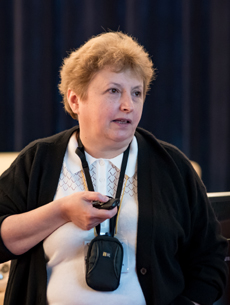 The first question to G. A. Posypanova (NRC “Kurchatov Institute”) was about the link between physics, biology, and medicine in their research:
The first question to G. A. Posypanova (NRC “Kurchatov Institute”) was about the link between physics, biology, and medicine in their research:
“If we consider such a link, we, first of all, think about oncology, treatment of which presupposes exposure to radiation. After radiation exposure of people suffering from brain cancer, long-term effects are often produced, and this has been already reported on today. It includes cognitive defects, up to dementia. It is connected largely with the fact that neuronal stem cells, which are, figuratively speaking, the reservoir for brain cells, suffer from radiation exposure. After the brain damage, they can transform into new neurons and repair their functions. The use of physical analysis methods for diagnostic tasks, such as computer tomography and some others, has to deal with the topical problem of the impact of small radiation doses. On the one hand, diagnostics is improved. On the other hand, it is not clear whether small doses affect the functions of stem cells so necessary for the organism or not. There is data claiming that a large per cent of oncological diseases is diagnosed among ill persons who frequently undergo computer tomography. However, there is another version that seems to be true: oncological diseases are found earlier among frequently surveyed people while they are not revealed among others. Not everything is clear in this issue; the data is controversial.”
“And you started your report by saying that neurons do not repair, but in fact they do…”
“Nowadays, we observe a large amount of work, an extensive range of experiments confirming that brains of different animals up to drosophila, and, of course, a human one, have neurogenic areas with cells some of which are in the sleep mode. They can be activated after damages, traumas of the brain. Particularly these cells provide new neurons, new glial cells that partially repair the brain’s functions. It is crucially important that there are such cells in organisms.”
The end of the article will be published in the next issue of the JINR Weekly Newspaper
Olga Tarantina, JINR Weekly Newspaper
Photos by Elena Puzynina
